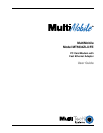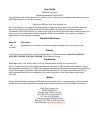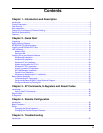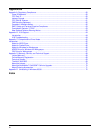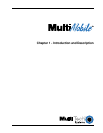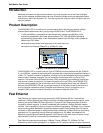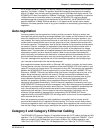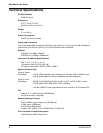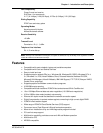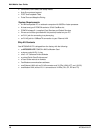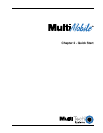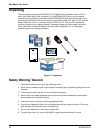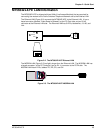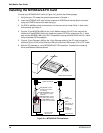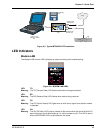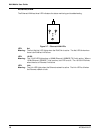
7
Chapter 1 - Introduction and Description
MT5634ZLX/FE
for full duplex operation. 100Base-TX requires Category 5 cabling, but does provide full duplex
operation. Full duplex 100Base-TX operation allows simultaneous transmission and reception,
both at 100 Mbps, thus providing service potentially equal to 200 Mbps half-duplex service. The
MT5634ZLX/FE does not support the 100Base-T4 subtype. To provide compatibility in traditional
10 Mbps Ethernet environments (where, for example, MT5634ZLX/FE cards are installed
anticipating upgrade of supporting hub equipment to Fast Ethernet), the MT5634ZLX/FE also
supports traditional 10 Mbps Ethernet operation, in full-duplex as well as half-duplex modes.
Selection of the best operation mode in any given installation is automatically governed by auto-
negotiation.
Auto-negotiation
You have probably had the experience of making a dialup connection through a modem, and
have heard the gravelly-sounding exchanges between your modem and the modem at the other
end of the telephone line (these exchanges are ordinarily played out through a speaker in your
local modem). As irritating as those few seconds of noise may be, they do let you know that your
modem and the remote modem are on the job, preparing for your intended communication with
the remote computer. The preparatory work of the two modems during those few seconds before
you see the “Connect” message is to negotiate the best data communication scheme which is
supported by both modems, and which is suitable for the quality of the telephone line linkage
between them. The parameters to be settled between the two modems include best baud rate,
compression method, and error correction method. When the two modems have tested the
phone line quality and settled on the combination of shared options and parameters which will
provide the best data communication over the connecting phone line, then you are given the
“Connect” message which signals the end of the intermodem negotiation and the beginning of
your intended communication with the remote computer.
Auto-negotiation between devices within an Ethernet LAN is similar in concept, but much briefer.
The two devices involved in the auto-negotiation will be the MT5634ZLX/FE card installed in your
laptop PC, and the hub through which it is connected into the LAN. The options to be negotiated
between the MT5634ZLX/FE and its supporting hub include Ethernet type (100BASE-TX Fast
Ethernet or 10BASE-T Ethernet) and duplex mode (half-duplex, being one-way-at-a-time, or full
duplex, being simultaneous transmit-and-receive). Startup communication between the two
devices occurs when both devices are power-on, the cable connection between them is good,
and the Network Operating System software is running. As soon as those conditions are
satisfied, the preparatory process of auto-negotiation between the MT5634ZLX/FE and its
supporting hub proceeds automatically. If the hub has auto-negotiation functionality, then it and
the MT5634ZLX/FE exchange a series of messages in which each device signals its capabilities
and listens for corresponding information about the other. The auto-negotiation process requires
only a few milliseconds, and the two devices select the best communication parameters
supported by both devices. If the hub does not have auto-negotiation functionality, then its
monotone (single capability) message will be recognized by the MT5634ZLX/FE’s auto-
negotiation facility, and the MT5634ZLX/FE will simply switch to the one of its own capabilities
which matches that of the hub.
When the preparatory procedure of auto-negotiation is completed, the line is ready and will
provide a data channel which is optimal for the two devices. The line will remain ready without
further auto-negotiation action until the linkage is broken. Auto-negotiation then reoccurs at any
time that the linkage is restored, again making the line ready for optimal data communications.
Category 3 and Category 5 Ethernet Cabling
The MT5634ZLX/FE supports Category 5 unshielded twisted-pair (UTP) cabling for Ethernet LAN
operation. Cat. 5 UTP cable uses the same RJ-45 connector that is used with 10BASET. (Cat. 3
cable can be used if the 100 Mbps port is running at 10 Mbps.) For 10 Mbps operation, use
100m/Cat. 3/4/5 UTP/STP cable. For 100 Mbpsoperation, use 100m/Cat. 5 UTP/STP cabling.



